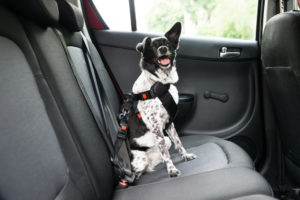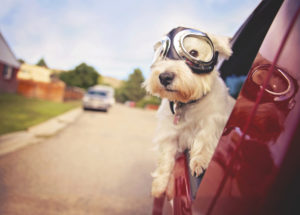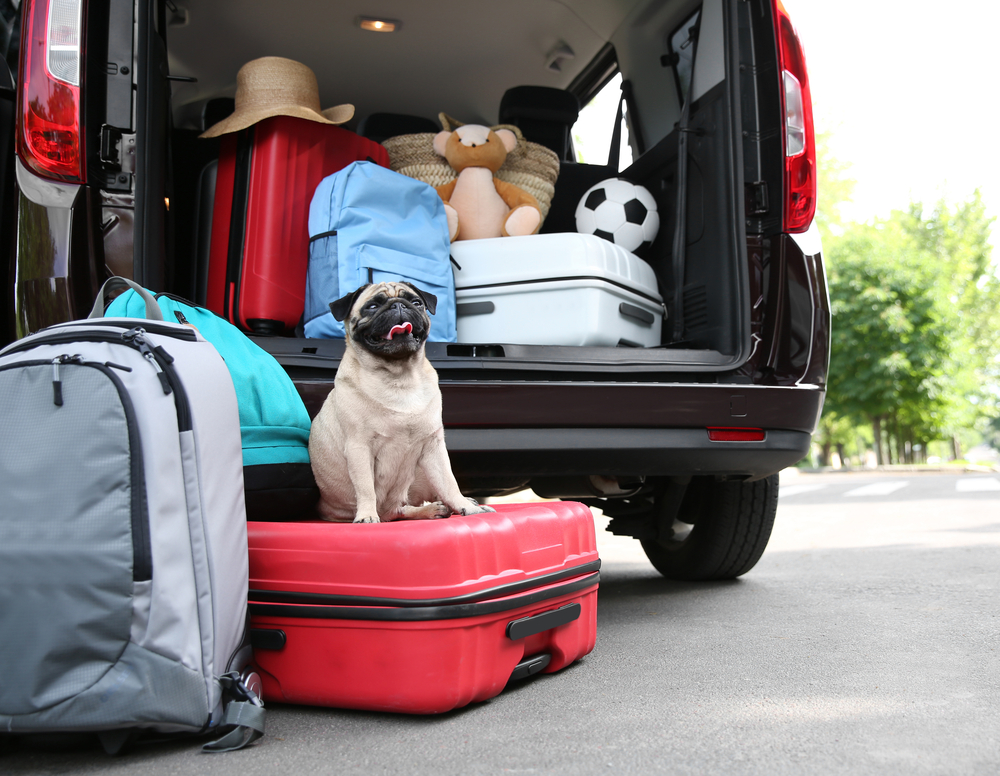I know we all want to bring our furry friends with us in the car everywhere we go BUT this should be done safely. So how do you make sure that your best friend is safe in this time together?
Weather
The first thing you will want to make sure of for your adventures is the weather. Making sure your friend is not too hot or cold is VERY important to make your car rides as safe as can be. This happens more often in the summer when temperatures get higher. Once temperatures reach 21.1 degrees Celsius it becomes way too hot for our friends to stay in the car. After being in a car for 1 hour, the inside temperature can become as high as 43.3 degrees C! Now you may think, well it’s a bit cloudy, or maybe I’ll just open my windows a little. However, these things do not make a difference, unfortunately. There has been a study that shows that even a light-coloured large vehicle on a hot but cloudy day can still reach up to 51 degrees C!
Seatbelts/Crates

All cats and dogs should be restrained in a vehicle for many reasons.
• If you were to get into any kind of accident with your furry friend you want them to be safely restrained so that they will not hurt themselves
• If your furry friend is loose in the vehicle this also means they have the ability to go on your lap or under your pedals which can interfere with your breaks if you need to stop or your vision can be impaired from this. If they are sitting on your lap as well your airbags can kill them.
• Unrestrained pets also become a distraction which could also get you into a collision especially if you are constantly worried about what they are doing in your vehicle. You wouldn’t get in the car without your seatbelt, don’t let your best friend go in without theirs!
Windows

Something else to look at for safety that you may be unaware of is car windows. As we all love to have our pups looking out the windows because well simply they love it and are adorable. How could you say no? There are some risks here as well. If your pup is able to stand and have their entire head out of the window, they may not be restrained properly which can become a huge issue if they try to leave out of the window or get accidentally thrown from the window. The next reason this is not a good idea, is that they become at high risk for eye, ear, face, and mouth injuries from airborne items. For this reason, I would suggest getting things like ear bands, goggles, and any other protective equipment they can get to keep them safe.
Training
Obviously, if your furry friend is not used to being in a vehicle this can cause a lot of anxiety. The best way to deal with this or prevent it is through training! If your friends are young enough, start with exposure training. This can help get them used to going in the car for many reasons, not just to go to your vet or something they dislike. Also before you can even do this step you want to start with making sure they are comfortable in small areas such as crates. Next, you will also need to train your friend to get used to the type of restraint used in the car such as a seatbelt or crate.
Medications
There are definitely some medications from your veterinarian that can be used to help any stressful or anxious friends. If you are concerned for the safety of you or your friend in the car speak with your veterinarian and they can help you come up with a plan. If this includes medications you will want to do this before you try travelling so you can do a test trial at home because every pet is different and some may not react to the medicine the intended way we would like and that you get the right dosing. You also want to speak with your regular DVM about this to make sure your friend is healthy enough to get medication for this. There are also medications to speak with your DVM about to help with car sickness if that is the concern.
Resources:
AVMA – https://www.avma.org/resources-tools/pet-owners/petcare/pets-vehicles
VCA Canada -https://vcacanada.com/know-your-pet/dog-behavior-and-training-traveling-air-and-car-travel
By: Ashley G, VT




